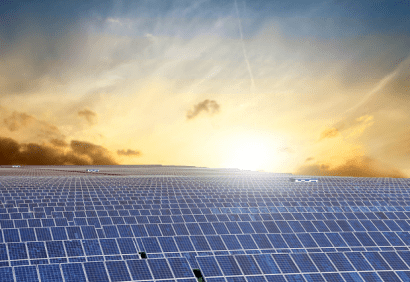The price of solar PV continues to fall. On Monday, a new record low of US2.42c/kWh ($A0.032c/kWh) was set in a tender for a large solar park in Abu Dhabi, not by an industry outlier but but by the biggest manufacturer of solar modules in the world, JinkoSolar.

The tender handsomely beats the previous record of US2.91c/kW set just last month in Chile, and previous sub-3c/kWh markers set in Dubai in an earlier tender.
And it continues the stunning cost reductions across renewable energy technologies, with new records set in recent months for on-shore and off-shore wind and solar thermal and storage in particular.
And, it seems, even this bid could be beaten, with the local National newspaper reporting that a local consortium, possibly Masdar Energy, submitting an offer of just US2.3c/kWh if the local authority agrees to write a contract for a solar farm of more than 1.1GW.
It was only 18 months ago that Saudia Arabia-based ACWA Power stunned the solar world, and the broader energy industry, with a bid of less than 6c/kWh in a Abu Dhabi tender.
That price was deemed “impossible” by many doubters, but that plant is being built – at even lower cost after it achieved cheaper than expected finance – and it has been bettered numerous times in the US, the Middle East, and South America.
Paddy Padmanathan, the CEO of ACWA Power, says prices can still fall: “We haven’t reached the bottom yet, but we’re close,” he told The National.
The fall in the cost of renewable energy technologies – 80 per cent in five years for solar and 60 per cent for wind – was cited as a major reason why agreement was reached in Paris last year for a landmark and an ambitious climate target, or well under 2°C and possibly 1.5°C. Now prices have fallen dramatically again.
PV Magazine described the latest solar bid as “astonishing”. It said it was entered into a tender conducted by the Abu Dhabi Electricity and Water Authority’s (ADWEA) for a solar park of at least 350MW. The price was offered by a consortium of JinkoSolar and Japanese industrial giant Marubeni.
PV Magazine reported that the plant is to be built in the town of Swaihan northwest of Abu Dhabi. A new settlement is being built in the region and it is need of quick, affordable electricity.
“Understanding that solar could be the cheapest option, ADWEA invited bids for a 350MW, but allowed bidders to increase the size of the development,” the website says. There were six bids in all, the National said, including the proposed offer of US2.3c/kWh.
“On the one hand I think the low cost of capital plays an important role and that will not remain so low forever, but on the other hand we’re still learning how to further reduce the cost of solar cells and other components as well as operation and maintenance cost,” he told the National.
“So there’s no reason why the cost of solar will ever increase again.”
Solar is not the only renewable energy technology to show stunning cost reductions in the past 18 months.
Offshore wind, considered a critical component of renewable energy strategies in northern Europe and the Americas, has fallen dramatically with Swedish group Vattenfall offering to build two projects off Denmark for a price of €60/MWh – ($6680/MWh – or US6.6c/kWh)
That beats the previous record set by Denmark’s Dong Energy, which in won a contract for a project in the Netherlands at €72.70/MWh in July ($US80/MWh – or US8c/kWh) – a price that then stunned the industry because it was half the prices awarded in UK wind farm tenders in 2015.
In fact, the price stunned even Dong Energy, which in 2012 had predicted that offshore wind costs would not fall below €100/MWh until 2020. Now, even their price has been beaten.
Prices for onshore wind are also setting new benchmarks, with a tender in Morocco earlier this year achieving prices of around $US25/MWh as part of a large tender for 850MW of wind capacity. The average price was $US30/MWh.
The cost of solar thermal and storage is also falling, with US company SolarReserve bidding US6.3c-6.5c/kWh in a tender in Chile, which has excellent solar resources. This is less than half the price of the company’s first installation, the 110MW Crescent Dunes facility that is now producing and storing electricity in Nevada.
Meanwhile, IEEFA’s Buckley says these massive cost reductions spell trouble for the fossil fuel industry and the growing risk of stranded assets.








